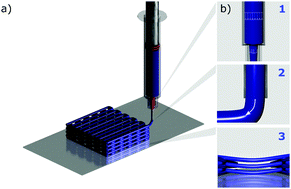Direct ink writing of energy materials
Abstract
3D printing is a promising technique for the sustainable fabrication of energy devices with arbitrary architectures. Extrusion-based 3D printing, called direct ink writing, is increasingly used for the manufacturing of batteries, supercapacitors and catalytic systems. In order to obtain mechanically stable and functional devices, inks formulation must meet stringent criteria for printability, that are usually expressed in terms of rheological properties. Inks are rheologically complex fluids, in which the electroactive materials are mixed with additives and solvents to form an extrudable and self-standing paste. The ink formulation process plays a key role in tuning the rheology and the functional properties of the printed device. In this review, inks formulation, rheological characteristics and device performance are critically discussed, providing insights into the rheology-printability and formulation–functional properties relationships. The main strategies that have been proposed to obtain printable inks from energy materials are reviewed. The role played by the different ink components to achieve the target rheology is contextualized and the integration of different inks into an all-printed device is discussed. Finally, an outlook on the future challenges and opportunities for the DIW of energy materials is provided with the view that general formulations which do necessitate thermal post processing could widen the opportunities of this manufacturing technique enabling the use for large scale production of energy devices.

- This article is part of the themed collections: Celebrating Materials Science in the UK, Popular Advances, Advances in Energy Materials and Materials Advances HOT Article Collection


 Please wait while we load your content...
Please wait while we load your content...